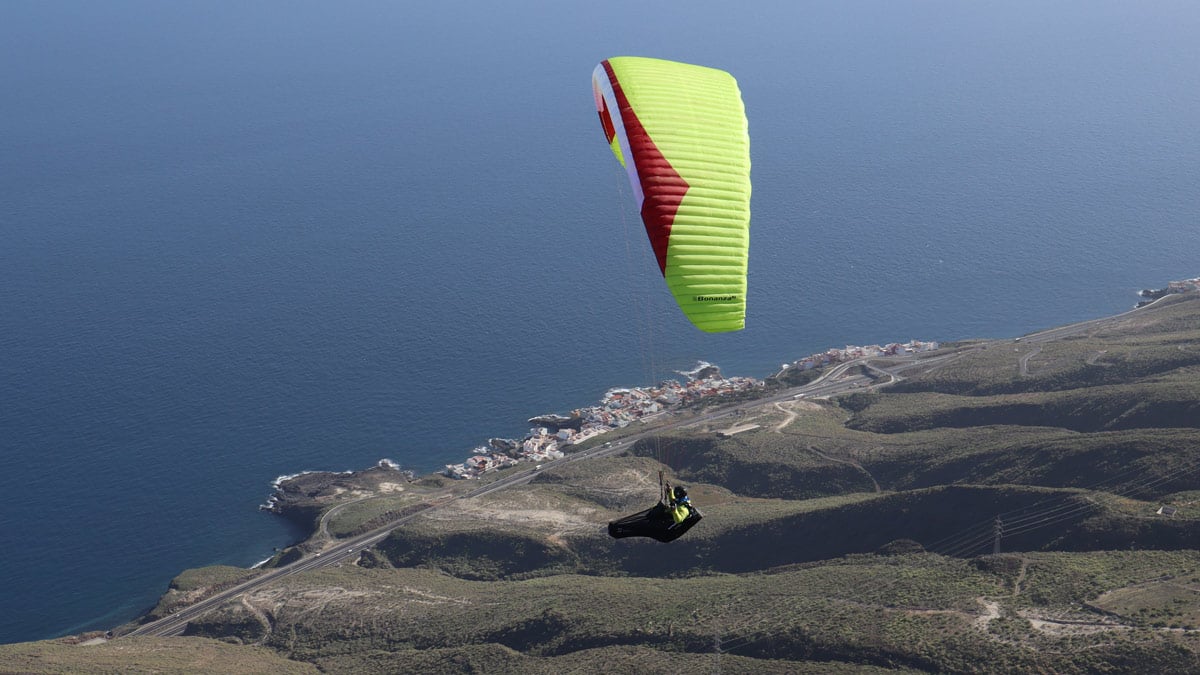
I was eagerly awaiting my chance to fly the Gin Bonanza 2 in proper thermic conditions, because initial tests late in 2018 suggested it was outstanding, and the development lead-up had created great expectations. In 2013, Gin released the Carrera, which was the highest-performing EN B the class had ever seen, and ruffled a few feathers because of its demanding nature. It proved that pilots should pay attention to the manufacturer’s description of new wings and not blindly follow the EN ‘safety rating’.
I flew the Carrera extensively, and really liked the wing. I did several UK XCs over 100km on the Carrera, including one highly memorable one just under 200km, ending up 4th overall in the 2014 UK XC distance league. We wrote a review of the Carrera and produced a review video. A small trim update meant the Carerra became the Carrera+ (2015, which Simon Steel commented on) but it was still ‘higher than high B’ in terms of pilot demands. Next came a lightweight offshoot of the original development, the Explorer (2016), which with lighter construction and slightly lower aspect ratio fitted more comfortably into the ‘high B’ space. Nancy Elliott and I flew the Explorer extensively, and Nancy reviewed it.
Then, for two years, nothing new in this space, because they were refining something special, a worthy successor to one of Gin's favourite wings, the original Bonanza (released in 1998). That was a calm Sports class wing with an aspect ratio of 5.6 and what seems like a large surface area by modern standards (26.8 m² flat for 85-100 kg). With four risers, 63 cells and 44 g/m² Carrington fabric, the M wing weighed in at a hefty 6.9 kg! That glider weight was nothing too unusual in those days--some wings were even heavier--which goes to show how glider design and materials have really moved on over the years, much for the better!
Gin Gliders make it clear, they are aiming for Sports Class with the Bonanza 2, and the EN C rating leaves no room for misunderstanding. It’s suitable only for experienced pilots. The Bonanza 2 is higher aspect (6.4) with a flat surface of 24.5 m² for the M (85-105 kg) with 71 cells and 32 g/m² Skytex fabric making it only 5.3 kg.
Gin Bonanza 2: Construction
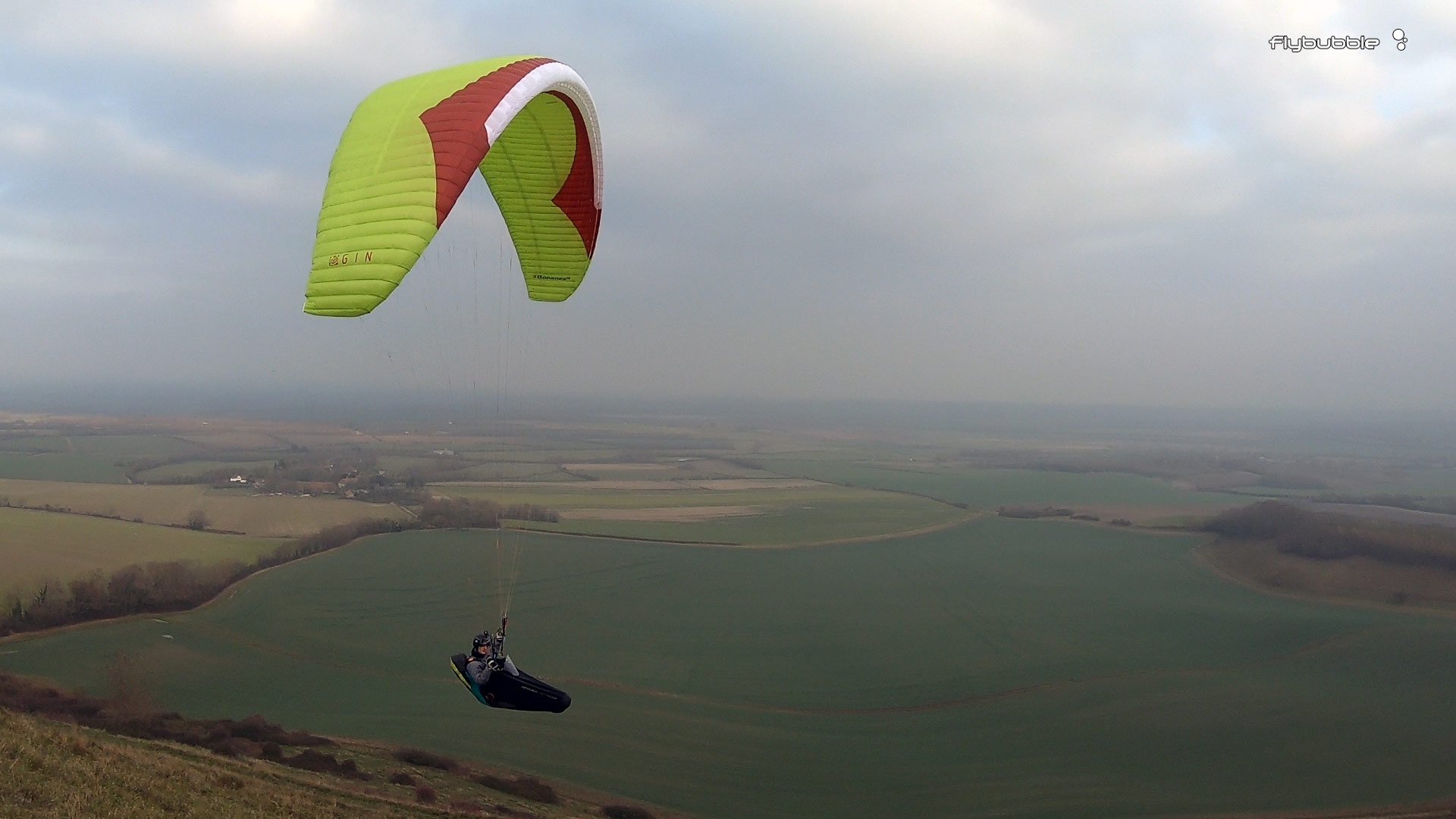
All the advances in modern paraglider technology have been incorporated into the Bonanza 2, producing an exceptionally clean aerofoil that retains its shape throughout the speed range.
This is largely due to the optimised internal construction and rigid construction elements: various forms of plastic rods are used in the Bonanza 2 which help to maintain the shape. The softer top-surface rods run almost all the way to the trailing edge except for a small expansion gap. It is important that you pack the glider as described in the user manual (after stacking the ribs against each other, fold up the glider along its length, with the first fold below the leading edge reinforcements. Do not bend any of the rigid reinforcements! If you do damage them, all the plastic rods can be replaced, through small pockets.) The packing diagram in the manual indicates a style of folding that will produce a large pack volume.
The leading edge has a marked shark nose / air scoop, across most of the wing every third cell has an internal reinforcing ‘cross-beam’ and the trailing edge is finished off with mini-ribs for one of the cleanest wing profiles we’ve seen. The finish on the risers is high: thin webbing, 18 mm Harken ball-bearing speedbar pulleys, magnetic keepers, maillons with plastic inserts and ceramic brake rings.
Gin Bonanza 2: On the ground
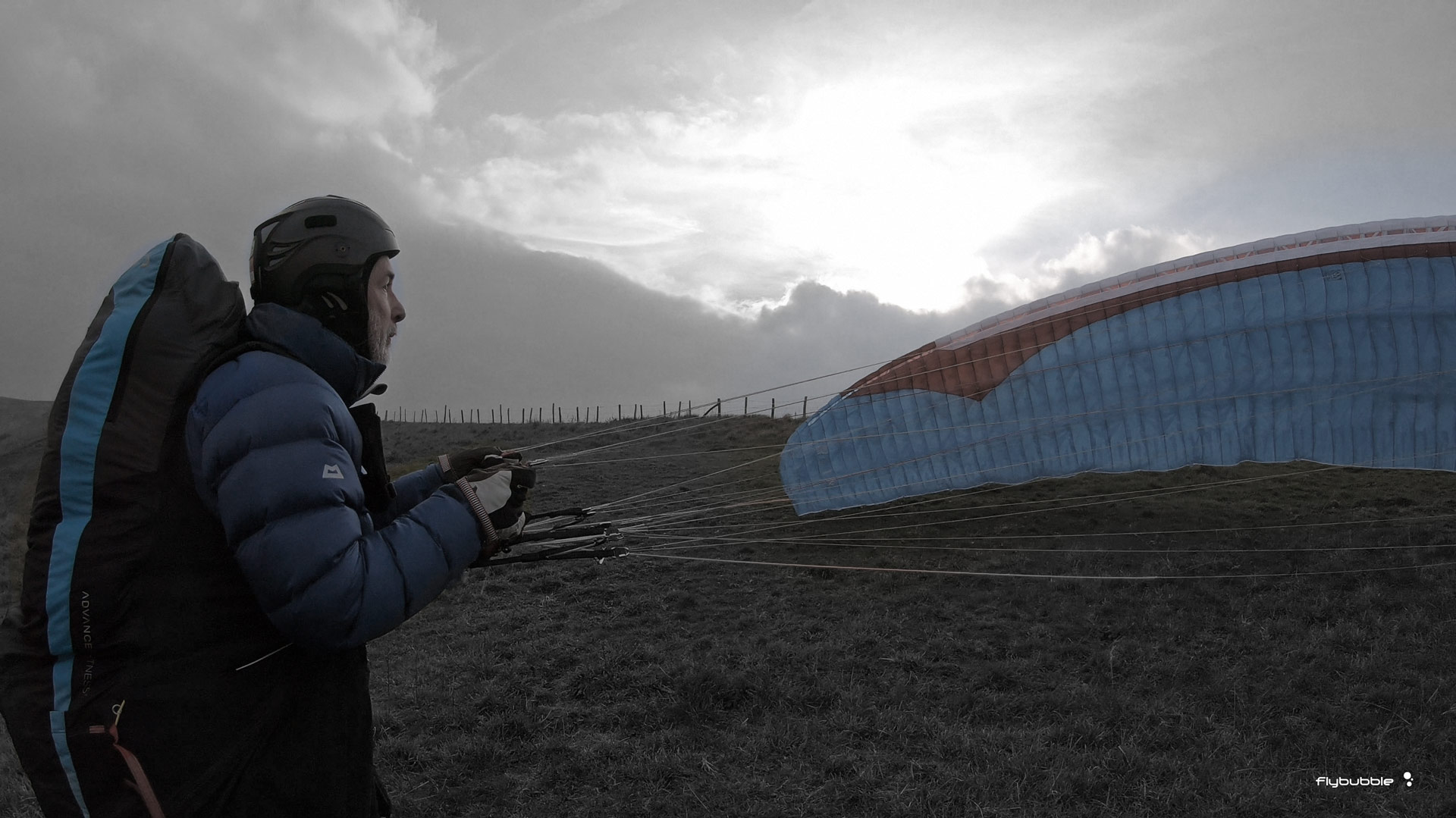
Simon Steel and I found the Bonanza 2 easier than the Carerra to kite and control on the ground. It has a high aspect ratio but moves in a unified, cohesive manner. It needs to be guided up on the A's.
Gin Bonanza 2: In the air
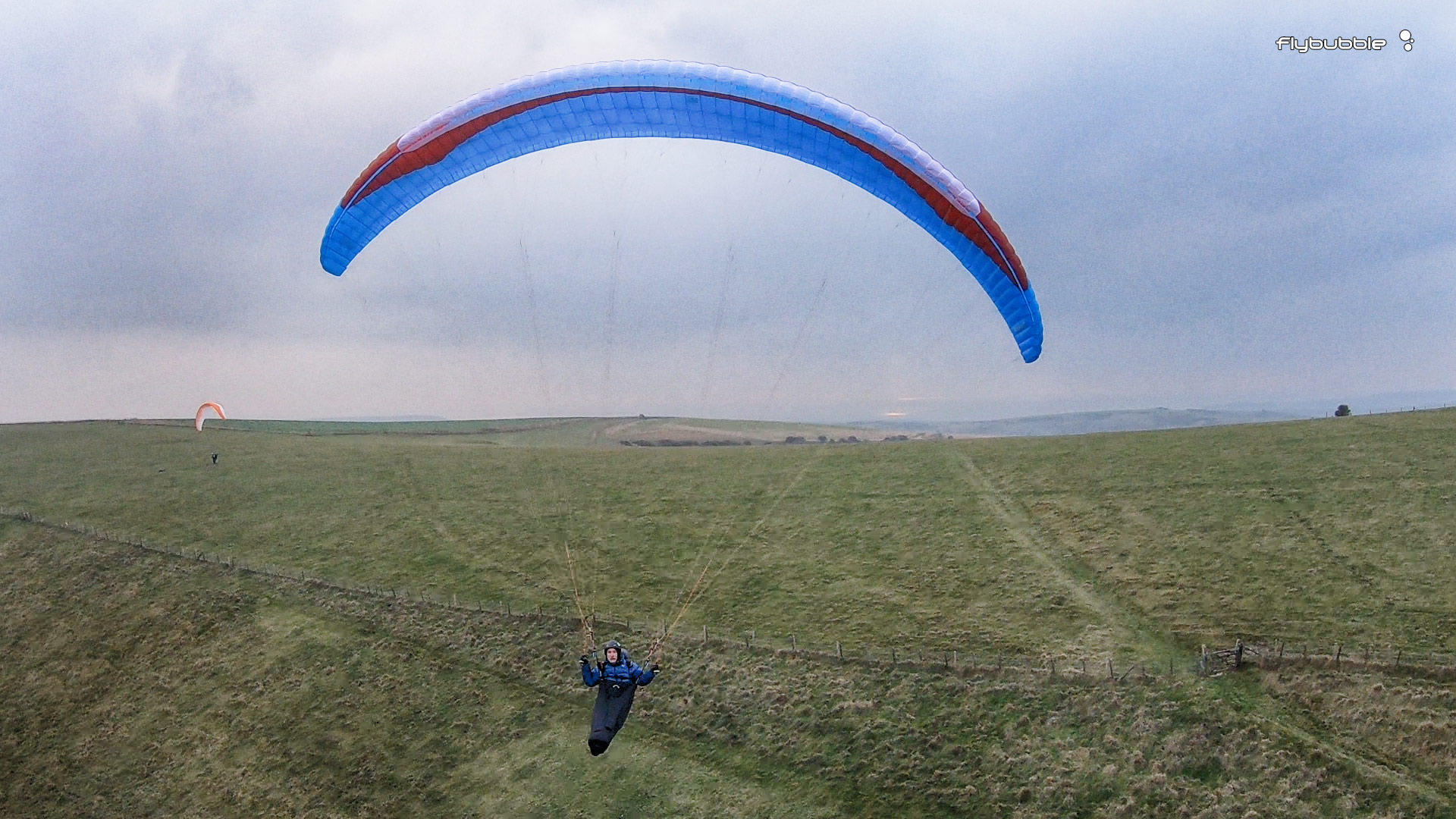
The wing has a taught feeling; it moves as one block without feeling ‘planky’. The brakes give firm pressure and a balanced feeling. The pressure increases near stall point and it was obvious and easy to avoid spinning the wing, which gave me confidence to crank it tightly when I needed to.
When I did big carving turns or wingovers, it built up energy in a beautiful smooth progressive manner. It is a real pleasure to play around with the Bonanza 2. Although I feel it is more tuned for efficient XC flying than freestyle, it's certainly not dull to fly!
For descent, it produces large and effective big ears which are stable and require a strong pull to induce. They need a deep pump to clear.
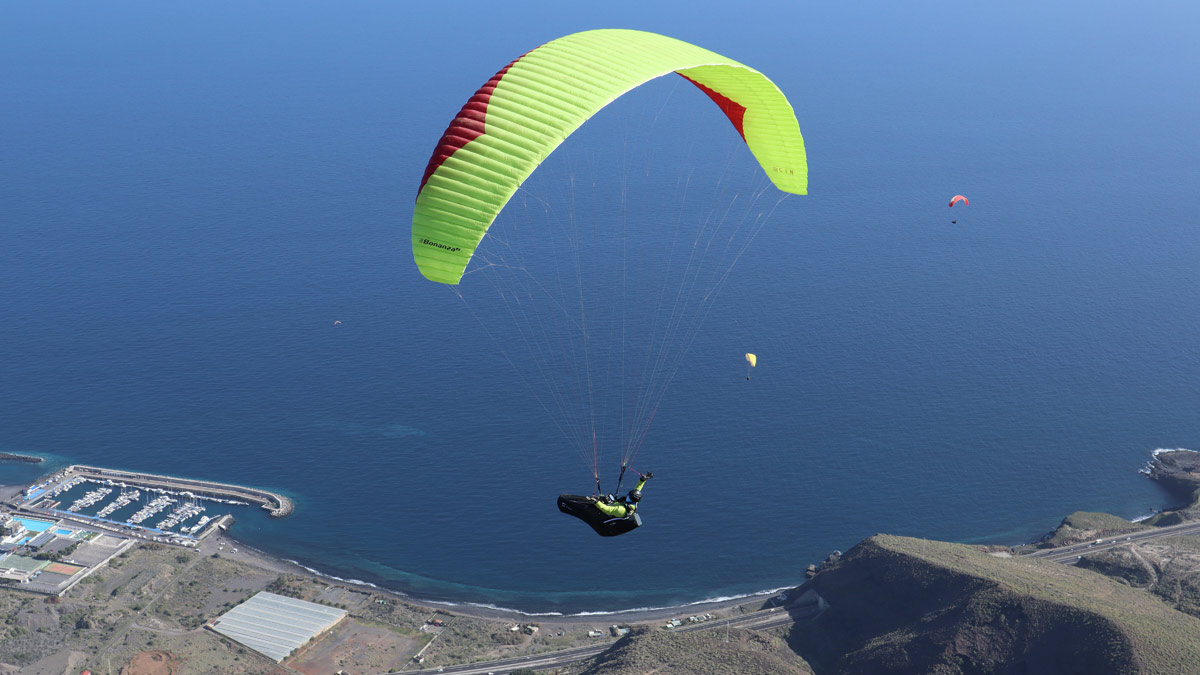
Comparing against pilots and wings I know, the climb rate seemed at least as good as the Carrera, which was outstanding for its class. The Bonanza 2 has a higher trim speed. Until I have a season of comparisons I can’t be sure, but based on the flying I’ve had in Tenerife and the UK, I’ll stick my neck out now and say the climb rate is ‘good to excellent’.
Initial glide tests put it at the top of the Sports Class, especially regarding its ability to convert little bumps to lift.
Gin Bonanza 2: accelerated
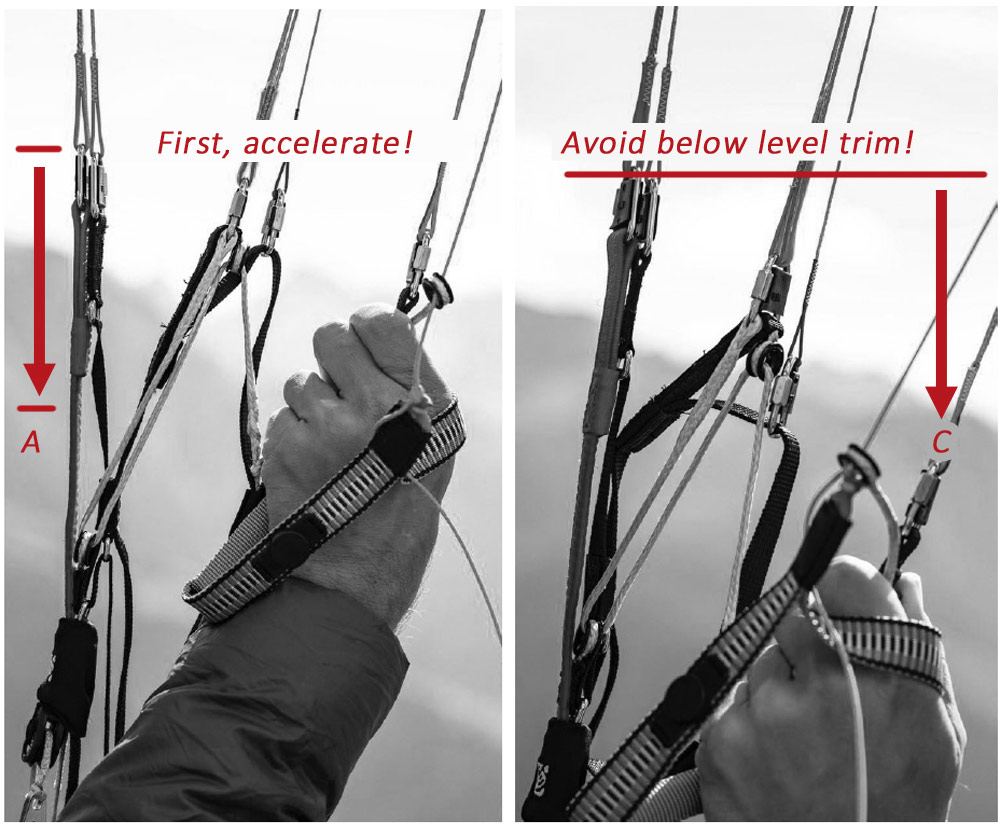
It has an effective and comfortable speed system, with high stability and an inspiring amount of whistling wind. The ‘smart riser’ system helps you control the speed and pitch of the wing with your hands during accelerated flight. You would achieve a similar result by easing your feet off the speedbar. This rear riser control is designed to work when you have engaged the speed system: pulling the rear risers down with your hands counters the acceleration effect, by increasing the angle of attack of the wing.
The Smart Riser instructions in the Bonanza 2 manual are somewhat misleading: you should avoid pulling down on the rear risers from trim speed (as pictured above) to produce a negative trim (C’s lower than A’s) as this risks stalling the wing! I found it tolerated a bit of abuse, but don't push your luck. When used correctly, it provides smooth control that doesn't crease the wing and gives great contact throughout rough transitions. I felt very confident on bar.
Gin Bonanza 2: Who is it for?
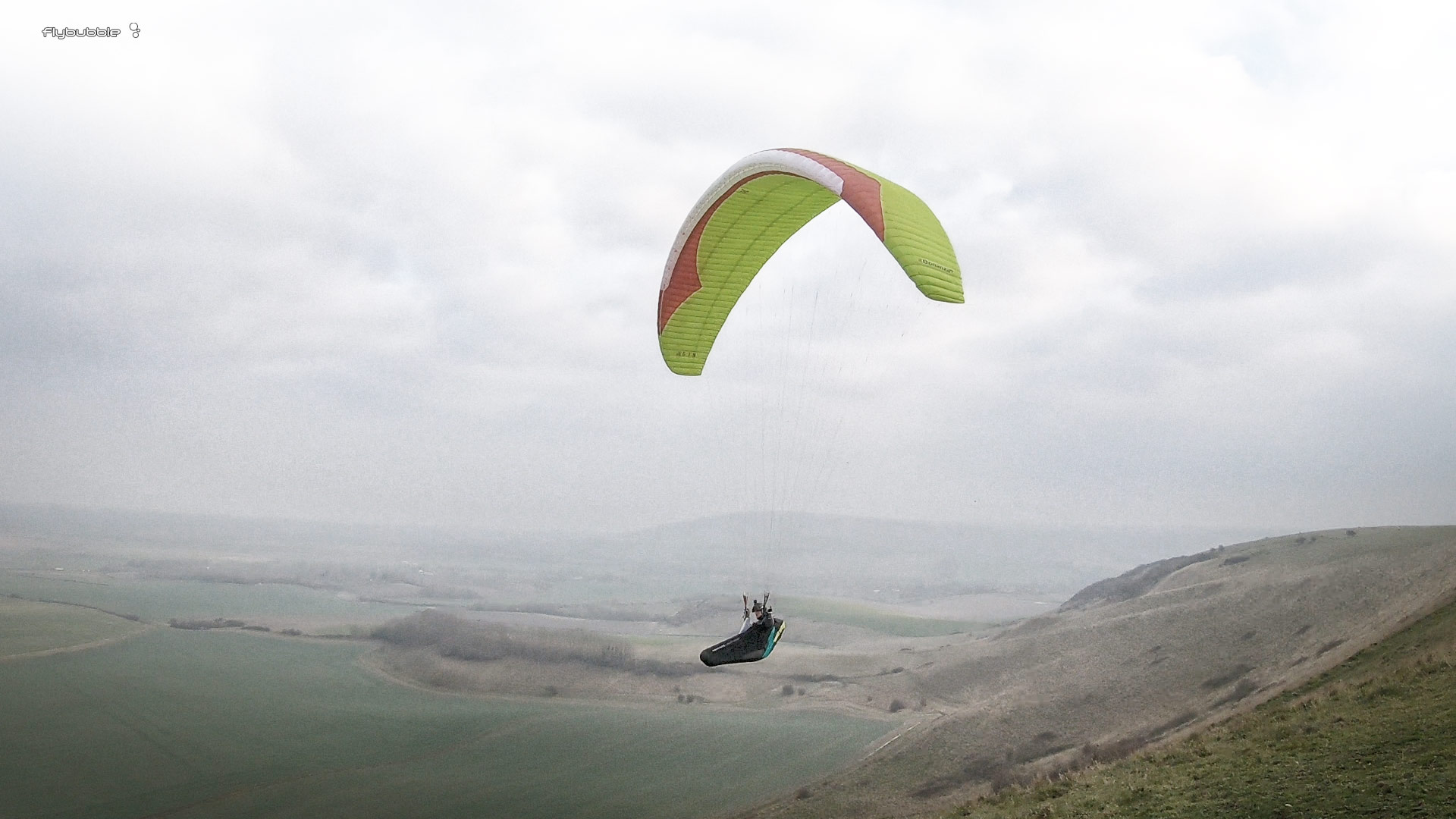
The Bonanza 2 is ideally suited to pilots looking for a Sports class wing with pilot demands near the middle of the class and performance at or near the top of the class. If cross country flying is your thing, you've built up plenty of airtime and are current with SIV and active flying, the Bonanza 2 will suit you perfectly as a comfortable and relatively easy to handle yet top performing Sports class wing. It's suitable for ambitious, talented pilots moving up from a high B or low C wing, not yet ready or wanting to move up into the EN D class. Pilots used to flying hotter wings (EN D or even CCC) looking for lower pilot demands yet retaining very good performance and that high aspect ratio feel will also appreciate the Bonanza 2.
Summary
The Bonanza 2 incorporates all the latest paraglider tech, producing an exceptionally clean sail with excellent build quality. It's a highly-reinforced, solid wing that likes to be accelerated and retains its shape throughout the speed range. The speed system is highly effective and comfortable.
Solid but not planky, with firm brake pressure and an overall well-balanced feeling, the Bonanza 2 is more tuned for efficient XC flying than it is to freestyle. The wing builds up energy in a smooth progressive manner, making it a real pleasure to play around with.
Our initial tests put the Bonanza at or near the top of the Sports class in terms of performance; glide, speed and climb rate are all excellent. It remains highly efficient in active air.
The Bonanza 2 is a top contender for XC hounds looking for high performing yet relatively easy to manage Sports class wing.
Find out more about the Gin Bonanza 2
Gin Bonanza 2 paraglider video review
You might also like Gin Bonanza 2 vs Niviuk ARTIK 4
Not sure if this is the right wing for you? Check out our Flybubble MATCH service
Brought to you by Flybubble
Like what we do? The best way to thank and support us is to buy gear from us and recommend us to others. Review our service on Trustpilot and our products on Flybubble Shop. You can also subscribe to Flybubble Patreon. Thank you!

